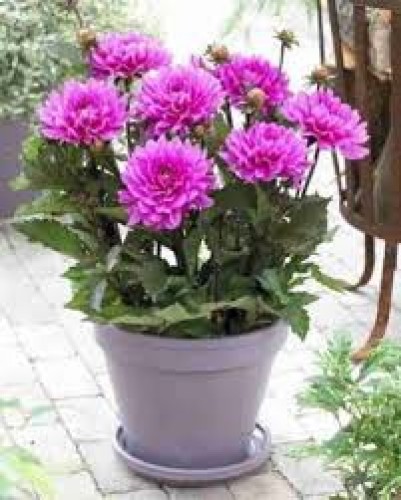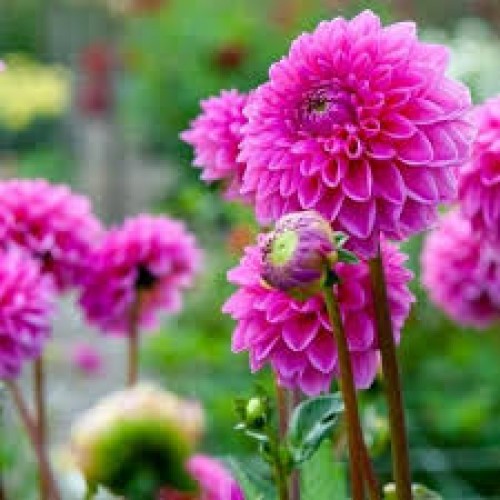60%
off
off
-
Sold
-

-

out
Dahlia (Dahlia pinnata)
Dahlia is a vibrant, tuberous-rooted perennial native to Mexico and Central America. Celebrated for its diverse array of flower forms and colors, it has become a favorite among gardeners and florists worldwide. Beyond its ornamental appeal, dahlias have historical significance in traditional medicine and offer various ecological benefits.
Botanical Overview
- Scientific Name: Dahlia pinnata
- Family: Asteraceae
- Common Names: Dahlia, Garden Dahlia
- Origin: Mexico and Central America
- Growth Habit: Herbaceous perennial with tuberous roots
- Height: Ranges from 1 to 6 feet (0.3 to 1.8 meters), depending on variety
- Flowering Season: Mid-summer to first frost
Key Features
- Flowers: Exhibits a wide range of flower forms, including single, double, pompon, cactus, and decorative types, in nearly every color except true blue.
- Foliage: Pinnate leaves with serrated edges, providing a lush backdrop to the vibrant blooms.
- Blooming Habit: The more you cut, the more they bloom; regular deadheading encourages continuous flowering.
- Pollinator Attraction: Open-faced varieties attract bees, butterflies, and other beneficial insects, supporting local ecosystems.
Cultivation & Care
- Sunlight: Requires full sun, at least 6–8 hours of direct sunlight daily.
- Soil: Prefers fertile, well-drained soil with a neutral to slightly acidic pH (6.5–7.0).
- Watering: Keep soil consistently moist but not waterlogged; water deeply once or twice a week.
- Fertilization: Apply a low-nitrogen, high-potassium fertilizer every 3–4 weeks during the growing season.
- Staking: Tall varieties may require staking to support heavy blooms and prevent stem breakage.
- Deadheading: Regularly remove spent flowers to promote new blooms and extend the flowering period.
- Overwintering: In colder climates, dig up tubers after the first frost, dry them, and store in a cool, frost-free place until spring.
- Propagation: Propagate through division of tubers, stem cuttings, or seeds; division ensures true-to-type plants.
Uses & Benefits
- Ornamental: Widely cultivated for their stunning blooms, dahlias are a centerpiece in gardens and floral arrangements.
- Medicinal: Historically, dahlia tubers were used by indigenous peoples to treat ailments such as epilepsy and as a source of inulin, beneficial for diabetics. [Source]
- Culinary: Some cultures consume dahlia tubers, which are rich in inulin, a type of dietary fiber. [Source]
- Environmental: Dahlias support pollinators, enhancing biodiversity and aiding in the health of surrounding plants. [Source]
- Therapeutic: Gardening with dahlias can provide mental health benefits, reducing stress and promoting relaxation. [Source]
Considerations
- Pests: Watch for aphids, slugs, and earwigs; employ organic pest control methods as needed.
- Diseases: Susceptible to powdery mildew and fungal infections; ensure proper spacing and air circulation.
- Climate Sensitivity: Not frost-tolerant; tubers must be lifted and stored in regions with cold winters.
- Maintenance: Requires regular care, including watering, feeding, and deadheading, to thrive.